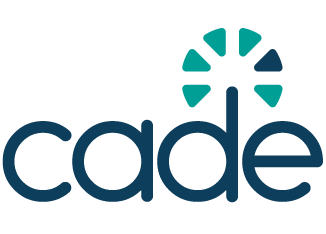Virkkunen’s AI Act simplification initiative: Regulatory reform before full implementation
Tech Commissioner Virkkunen has clearly articulated her commitment to revising the AI Act’s reporting obligations as part of a broader simplification agenda.

Tech Commissioner Henna Virkkunen is leading a comprehensive initiative to revise and streamline the European Union’s landmark AI Act, with particular attention to reporting obligations, despite the legislation still being in the early stages of implementation. The Commission’s approach signals a broader shift toward regulatory streamlining across EU digital laws, aiming to reduce administrative burdens for businesses while maintaining core principles. The move comes as initial provisions of the AI Act have just begun taking effect in February 2025, with the Commission presenting its initiative as necessary to ensure European competitiveness in the global AI landscape while facing criticism that such early revision could create regulatory uncertainty. Reports Euractiv.
Virkkunen’s vision
Tech Commissioner Virkkunen has clearly articulated her commitment to revising the AI Act’s reporting obligations as part of a broader simplification agenda. ‘We are very committed to the principles we have in AI act… but we’re also looking if there is extra administrative burden or some reporting applications that we could cut to make it easier for the businesses,’ Virkkunen stated after presenting her flagship AI Continent Action Plan.
Virkkunen has defended her approach against criticism, stating: ‘I don’t see that it’s harming anyone if we are cutting some reporting applications’. Her simplification strategy isn’t limited to informal guidance but includes formal mechanisms for potential regulatory adjustment. The Commission has launched a consultation and call for evidence aimed at identifying ‘further measures that are needed to facilitate a smooth, streamlined and simple application of the AI Act’. This consultation is explicitly described as ‘feeding now our simplification proposal,’ according to Virkkunen’s statements in a Committee on Legal Affairs hearing.
Implementation
Beyond potential legislative revisions, the Commission is establishing support mechanisms to facilitate compliance with the AI Act. These include an AI Act service desk and regulatory sandboxes, aimed at making implementation more ‘innovation-friendly’. These structures demonstrate the Commission’s dual approach – maintaining the fundamental framework while providing practical assistance to businesses navigating the new requirements.
The regulatory sandboxes, in particular, represent a controlled environment where businesses can test AI applications under regulatory supervision, gaining clarity on compliance requirements without immediate enforcement risks. This implementation strategy aims to balance regulatory objectives with practical business considerations.
The Broader EU digital agenda
Virkkunen’s initiative on the AI Act is part of a comprehensive review of the EU’s digital regulatory landscape. During the Financial Times’ Enabling Europe’s AI Ambition conference, she emphasised: ‘We want to make sure that our rules are encouraging innovations and investments, and that’s why we are very committed to simplifying the rules and making it easier for businesses to innovate and invest in the EU’. This approach acknowledges industry concerns about the cumulative impact of multiple overlapping regulations.
The simplification effort extends beyond the AI Act to include other major digital regulations such as the Digital Markets Act and Digital Services Act. ‘We are looking at all our digital rules together and carrying out so-called ‘fitness check,’ Virkkunen stated, adding ‘We know that there are overlapping parts’. This comprehensive review aims to identify and eliminate redundancies across the regulatory framework.
An economic dtrategy
The Commission has framed regulatory simplification as an economic necessity rather than merely an administrative convenience. ‘Now we have to look at how we can cut red tape and bureaucracy for our companies, especially when it comes to AI,’ Virkkunen emphasised. This perspective positions regulatory streamlining as a competitive advantage strategy for the EU in the global technology landscape.
Beyond regulatory adjustments, the Commission is addressing structural challenges facing European AI development. Virkkunen noted infrastructure limitations, explaining: ‘We have a very strong research and scientific community and we have thousands of startups who are working on AI, but they are often lacking access to computing capacity – and that’s why we are now supporting investments to our EuroHPC supercomputer’.
Key reporting obligations under review
Virkkunen’s simplification push specifically targets reporting obligations, which are central to the AI Act’s governance approach. The Act establishes transparency as a fundamental requirement, defining it as ensuring ‘AI systems are developed and used in a way that allows appropriate traceability and explainability’.
Transparency obligations framework
The Act structures transparency requirements across three dimensions:
- Transparency requirements for high-risk AI systems (HRAIS): These impose specific obligations on providers to ensure transparency toward deployers. This includes technical documentation and disclosure of design parameters.
- Transparency obligations for providers of general-purpose AI models: Systems like generative AI must disclose training data sources and methodologies, ensuring outputs are traceable and explainable.
- General transparency rules applicable to all relevant AI systems: These establish baseline disclosure requirements across the AI ecosystem.
Reporting and monitoring requirements
The monitoring and reporting framework under potential review includes:
- Post-Market Monitoring: Providers must track system performance and document deviations or emerging risks. This ongoing obligation extends throughout the lifecycle of AI systems.
- Incident Reporting: The Act requires prompt reporting of serious incidents to relevant authorities. This includes system malfunctions or breaches of ethical guidelines.
These reporting mechanisms are precisely the areas where Virkkunen sees potential for streamlining, suggesting some requirements may create unnecessary administrative burden without proportionate benefits to oversight.
Concerns
Consumer protection advocates have expressed alarm about the potential dilution of the AI Act’s effectiveness. Frederico Oliveira da Silva, deputy head of digital rights at the European Consumer Organisation (BEUC), warned that ‘It is the credibility of the EU to consumers that is at stake’. He argued the Commission should prioritise ‘legal stability and focus on robust implementation rather than pursuing early revisions’.
The timing of the revision initiative – coming before full implementation – has particularly concerned activists who worry that regulatory uncertainty could undermine the Act’s objectives. They fear “simplification” could become a euphemism for weakening consumer protections to accommodate business interests.
Industry support
From the business perspective, Virkkunen’s approach addresses concerns about Europe’s competitive position in AI development. With few major AI companies based in the EU, industry stakeholders have welcomed efforts to reduce administrative burdens that might disadvantage European firms compared to global competitors.
What is next?
The coming months will be crucial in determining whether Virkkunen’s vision materialises into concrete regulatory changes or remains limited to implementation guidance and support structures. The consultation process will likely reveal the specific reporting requirements targeted for elimination or modification, allowing more precise assessment of potential impacts on both business operations and consumer protections.
For businesses operating in the EU AI ecosystem, this developing situation suggests a potential easing of administrative requirements, but also creates some regulatory uncertainty during the implementation phase. Meanwhile, the Commission faces the challenge of demonstrating that simplification can enhance compliance and innovation without compromising the Act’s fundamental protections. The outcome of this balancing act will significantly influence the EU’s position in the global AI governance landscape and its competitiveness in AI development.


